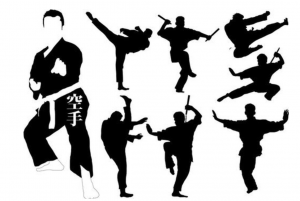culture
Karate adopts the “inch-stop” competition method, which embodies the spirit of Olympic sports and conforms to the national concept of harmonious development. Karate culture is closely related to Chinese martial arts culture, which has laid a good foundation for the development of karate in China.
Form the background
According to Japanese “Kojiki” records, in the 6th century, due to the introduction of Chinese Confucianism and the influence of Confucianism, Japan gradually formed a moral system centered on the Four Books and Five Classics to regulate the moral education of the masses. During the Edo Shogunate, Japanese Bushido Selective Reference
Chinese Confucianism and the integration of Japanese local culture have formed a complete Bushido spirit of benevolence, justice, courtesy and sincerity. Japanese etiquette culture is deeply influenced by Confucianism in my country. After selective reference and absorption, combined with local culture, a unique martial arts etiquette culture has been formed. Karate fully demonstrates Japan’s unique martial arts etiquette culture.
Connotation
Japan’s Bushido spirit is deeply influenced by Confucianism in my country. As Japan’s national skill, karate, while fully embodying the martial arts etiquette culture with its own national characteristics, must be able to demonstrate the connotation of Confucian culture in my country. Karate literally includes three parts: “empty”, “hand” and “dao”. “empty” and “hand” represent martial arts and techniques, and “dao” represents a spirit displayed by the practitioner in practice. Kind of cultivation. Karate is not only a martial art, a kind of education, but also a way that is embodied in behavioral norms and etiquette.
Karate is known as the “junzi’s boxing”. The unique “OSS” ceremony and the practice requirements of “starting with ceremony and ending with ceremony” fully demonstrate the etiquette culture of karate. Karate’s etiquette is divided into two types, namely kneeling and bowing. Kneeling is often used on more important occasions or when meeting heavyweights such as genre masters and elder teachers. It also appears in important game duels. . The bowing ceremony is often used in usual practice and competition. When entering the dojo, you must first salute the national flag. When you see the coach and teammates, you must salute to express your love for the motherland, respect for the coach and teammates. Friendship. It can be seen that the etiquette norms of karate fully demonstrate the ideological concept of ritual comparison in Confucian culture in our country.
